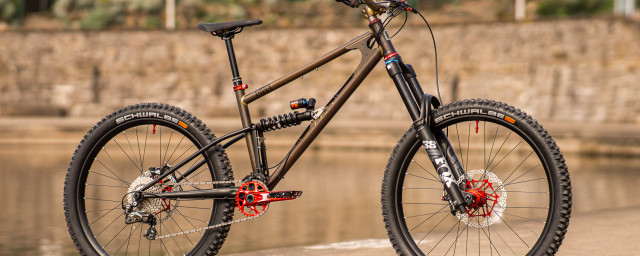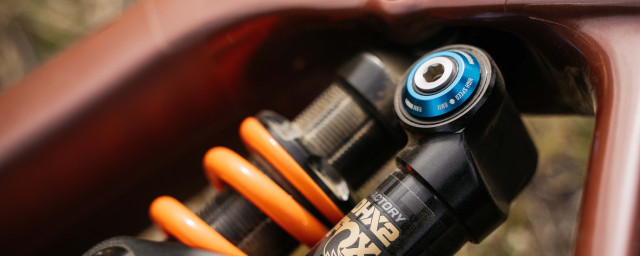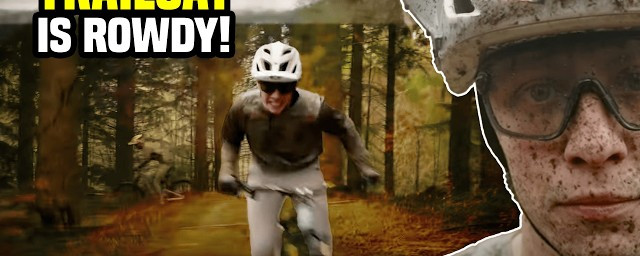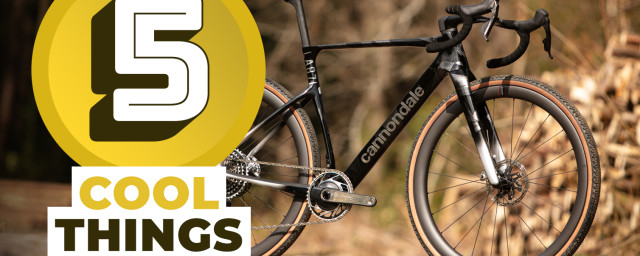Winter bikepacking: 8 essential tips for a successful adventure

Winter bikepacking requires a little more strategic planning and a readiness to face unpredictable weather conditions than trips in the summertime. The autumn and winter bring colder temperatures, wetter landscapes and reduced daylight, but they also offer unique and memorable opportunities for adventure. If you want to ensure your winter bikepacking trip is both successful and enjoyable, we've put together a host of tips for surviving the cold.
- Six tips to upgrade your winter cycling experience
- How to pack bikepacking bags - carry everything you need and more
- Best winter cycling gloves 2023 - mountain bike gloves to keep your hands warm
Winter bikepacking - planning
Bikepacking requires a certain amount of planning no matter what time of the year it is, but in the winter you should take extra time to make sure you're prepared for what's ahead.
Always make sure you let someone know where you're heading and share your route plans, if possible. If your route includes rough sections that might be subject to flooding or landslides, always create a backup route. If you're new to route planning, we've made a guide for planning your gravel rides.
It's also worthwhile re-considering the distances you want to cover in the winter. In the summer a 100km day on the saddle is no problem, but the winter conditions might be more challenging so you should consider a shorter route. This also gives you more room for any faffing, mechanicals and taking in the scenery. The winter days are shorter, which means you should always prepare to ride in the dark even if you might be lucky to not do so.
Choose your shelter wisely as well as the right spot to pitch
Opt for a tent with a high hydrostatic head (HH) to withstand winter conditions, and leave the lighter-weight bivvy bag at home. Not all waterproof materials are created equal, so aim for a fabric with a minimum HH of 1000mm. To be classed as 'waterproof' a fabric needs to have an HH of at least 1000mm, but in reality, this will not stand up to British weather, so some tent fabrics can have an HH as high as 30,000mm.
Additionally, be mindful of your pitching location, considering both shelter and wind direction. While woodland may seem appealing, it might not be the safest choice during high winds due to the risk of falling trees and branches.
Sheltered spots will obviously offer more protection, but you should consider the forecast wind direction and speed when pitching. A simple tip is not to pitch with your tent or shelter entrance directly facing into a headwind.
It's also worth looking at locations of bothies – these are free-to-use, remote shelters – as they can offer indoor shelter in some beautiful locations all over the UK. For quite obvious reasons, they are often less crowded in the winter and some of them even benefit from a fireplace, couches and basic commodities that help you sleep more cosily. To find one, check out the Mountain Bothies Association and other organisations that manage bothy shelters. And it should go without saying that if you end up staying in a bothy, ensure you leave it clean, tidy, and exactly how you found it - or tidier.
Winter bikepacking - a warm sleeping system and layering up
When it comes to your actual sleeping kit, you want to focus on warmth. Starting with the mat, you should look for winter-specific sleeping mats with higher R-values – often at least four – that offer enhanced insulation. This will form a warm base to keep you off the cold ground.
In the ideal scenario, you would also have a winter sleeping bag, but if you don't quite have the cash to splurge on a new one, combining your existing sleeping bag with extra layers or quilts can be a cost-effective alternative, although the setup will take up a little more space.
Lastly, for your sleeping kit, consider getting a small hot water bottle to carry with you. You can heat up water before bed on your camping stove, and having a warm bottle to snuggle up with is the best! You can also take your riding kit (unless it's absolutely gross and dirty) into your sleeping bag which means it'll be warm to put on in the morning.
Winter bikepacking - staying dry and keeping warm
With increased chances of getting wet during winter rides, you should always pack spare clothing like base layers, good winter gloves, and warm socks. Invest in a high-quality waterproof jacket to shield your core from the elements. Forget about being fast and aero, and wear the warmest garments you have – even if that means the puffer jacket.
If you have the choice, opt for synthetic garments over down if there's uncertainty about keeping your kit dry, as synthetic insulation retains its effectiveness even when damp. Keep at least some of your spare clothing in a dry bag that ensures you'll have dry layers available.
Some of the extra items of warm kit we'd recommend for arrival at camp include an insulated jacket, long johns, spare socks to sleep in, and a buff or warm hat.
If getting wet is more guaranteed than getting super cold, then consider neoprene garments. These will do well, especially in slightly warmer (nearer 10 degrees) temperatures.
Winter bikepacking - always check the forecast (but never fully trust it)
While weather predictions have improved as technologies have got better, the changeable nature of British weather should not be dismissed. Take temperature forecasts with a pinch of salt, and always consider local variations and elevation effects. It's useful to check multiple sources for a comprehensive overview, including websites like the Met Office, XC Weather, Windy and the Mountain Weather Information Service for specific regional weather forecasts.
The countryside is usually always colder than urban areas, and the higher you go the colder and windier it will always be.
Wind chill is a very important consideration and one that can be hard to judge. There is no official calculation for wind chill, but the Met Office uses "feels like" temperature, which aims to be accurate with wind and humidity factored in. One example of the effects of the wind is that at 2°C and a wind speed of 25mph the "feels like" temperature would be -5°C, which is a significant drop.
When it comes to elevation, as a basic guide, it will drop by 1 degree for every 100 metres of elevation. So, if you're planning a big trip into the hills, ensure you think about how far you'll ascend and the highest point on the ride.
Bikepacking in the winter - cooking and food
While you can do multi-day bikepacking trips with no cooking equipment in the summer, in the winter it's nearly a necessity to have something to heat up things with. Even when things get miserable in terms of weather, a warm meal or drink can really lift the spirits, so it's worth packing a little gas canister and camp stove with you.
As mentioned above, a camping stove will also allow you to fill a hot water bottle with warmth that you can have next to you either in the sleeping bag or even inside your jacket in a very dire situation.
The basics of every bike packing trip apply in the winter, too. Make sure you always carry more water and food you think you will need. Before you camp, make sure you have enough water for not just the evening and morning, but for the first leg of the riding, too.
Winter bikepacking - extra tips and tricks
If you are new to bikepacking, the cost of getting a good set of bikepacking bags, gear and clothing might seem daunting. Don't let it put you off from adventures on your bike. Bikepacking adventures can be done on a budget and you can always use what you already have to head out there.
You don't also have to camp! If you want to just do a multi-day ride, opt for staying in hotels and B&Bs for optimal comfort and warmth. Although more expensive, this might be a more comfortable winter bikepacking trip and usually, it's off-season so prices are cheaper.
In terms of bikepacking bags – if you don't have dedicated ones you can use a pannier setup or even just a rucksack for shorter excursions. A dry bag with a few Voile straps (stretchy rubbery straps with hooks) makes an excellent budget bar bag.
You can also look for a few essential bikepacking items from the wider camping and outdoor stores.
- Survival shelter – Not the foil blanket type (although they are also of some use) but the type designed to fully cover you. If the weather turns and you're nowhere near the indoors or your camp, jumping inside a survival shelter, even for a few minutes, will make a huge difference. Some brands offer two- or four-person shelters – they might seem heavy and bulky, especially the four-person type, but once you're inside one getting instantly warmer you'll be very grateful.
- Reusable heat packs – Cheap and effective, these are simply called 'hand warmers', these are usually a liquid within a casing. There's a small metal disk that, when clicked, turns the liquid to solid so it emits heat. They stay warm for a while and can be reset back to liquid by placing in boiling water for several minutes.
- Rubber gloves (often called Marigold gloves) are a great emergency glove to pull on if your ride is absolutely soaking – and they can be purchased from most supermarkets.
Test before heading out
If you have a suitable location near home, consider having a night out in the predicted forecast conditions to see if your winter bikepacking setup that you have planned works well. You might find you need more kit with you to stay warm or discover you have a massive hole in your tent. Or the total opposite; you might realise you don't need five pairs of underwear on your two-day trip!
Doing a trial night out is also a great way to test your mental strength. With a warm, comfortable bed and all the food comforts you might want close by, will you still be okay sleeping in your breezy tent and sleeping bag?
Those are our top tips for you to have an enjoyable winter bikepacking trip. What are yours?
















